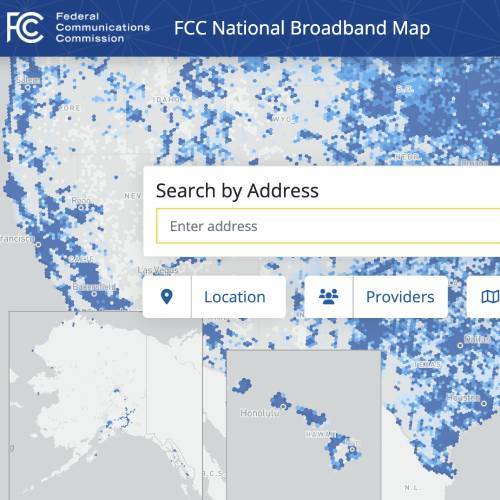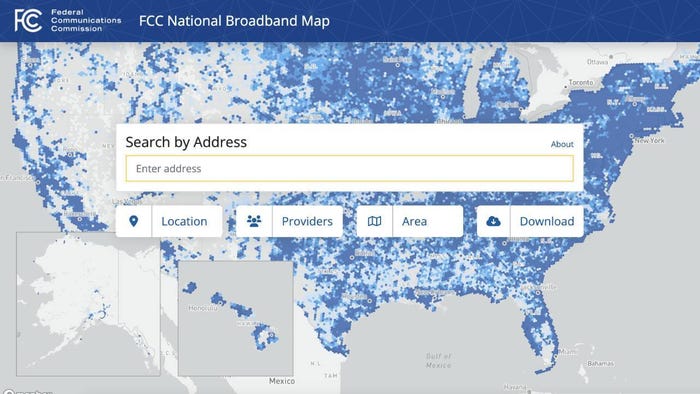The NTIA's draft guidance, open for comments through May 5, offers insight into how states may further challenge the FCC's broadband map with their own data.

The NTIA this week released draft guidance for state challenge processes for the $42.5 billion Broadband, Equity, Access and Deployment (BEAD) program. The guidance, which is open for comment and not yet final, offers some insight into how states and territories may further challenge the FCC's broadband map with their own data.
It also gives a glimpse into the uphill climb of data analysis and bureaucratic processes still to come before BEAD grants start rolling out to providers.
As per BEAD rules, states and territories (referred to here as "eligible entities") must spell out in their initial BEAD proposals how they'll conduct a challenge process once BEAD funding amounts are allocated by the NTIA this summer. The NTIA has specified June 30 as its target date to release funding allocations, though some lawmakers are trying to pass a bill to postpone that date until FCC mapping problems are addressed.
As the NTIA explains in its draft guidance, "The goal of the BEAD challenge process is to ensure Eligible Entities identify the full universe of locations that are eligible for BEAD funding."
To do that, eligible entities will first have the opportunity to conduct their own review of their eligible locations on the FCC's national broadband map and submit suggested changes to the NTIA. They'll then use those revised locations to host a challenge process.
Specifically, according to the BEAD notice of funding opportunity (NOFO) published last May, under the challenge process: "a unit of local government, nonprofit organization, or broadband service provider can challenge a determination made by the Eligible Entity in the Initial Proposal as to whether a particular location or community anchor institution within the jurisdiction of the Eligible Entity is eligible for the grant funds, including whether a particular location is unserved or underserved, and Eligible Entities must submit any successful challenges to NTIA for review and approval."
After conducting the challenge process, states are to submit their results and final eligibility determination to the NTIA "to approve or reverse." States must then publish a notice with the final determination of eligible locations 60 days before allocating grant funds.
National broadband map as 'starting point'
Questions amongst industry stakeholders have been whether and how states will be able to use their own broadband data versus the FCC's data once BEAD amounts are allocated. While some in the industry have pushed for the FCC's national broadband map to be the sole data source used in BEAD, the NTIA's guidance this week refers to the national broadband map as a "starting point" for identifying each eligible entity's unserved and underserved locations.
Figure 1:  (Source: FCC National Broadband Map)
(Source: FCC National Broadband Map)
According to the draft guidance, eligible entities must "use the National Broadband Map as a starting point to identify the list of BEAD-eligible locations within their jurisdiction, prior to conducting a challenge process." That means using the map to identify each underserved and unserved location, as well as each eligible community anchor institution (CAI).
Thereafter, however, states may request approval from NTIA Assistant Secretary Alan Davidson to "modify the set of locations it proposes to make eligible for BEAD funding to reflect data not present in the National Broadband Map." The guidance goes on to say: "Eligible Entities are required to provide sufficient justification that the modifications more accurately reflect the locations eligible for BEAD funding within the Eligible Entity's jurisdiction."
While states may not propose to add or remove addresses from the set of broadband serviceable locations, they may, for example, demonstrate through "rigorous speed test methodologies" that a served location is underserved.
States could also potentially submit data that would give them permission to "overbuild" older technologies. Another example the NTIA offers for what a state might propose is: "To treat locations that the National Broadband Map shows to have available qualifying broadband service (i.e., a location that is 'served') delivered via DSL as 'underserved' to facilitate the phase-out of legacy copper facilities and ensure the delivery of 'future-proof' broadband service."
In addition to submitting data contesting the FCC's map, states will also conduct a "deduplication process" to remove eligible locations that have existing funding commitments. According to the NTIA, additional guidance is forthcoming on a newly developed BEAD Eligible Entity Planning Toolkit that states can use to "overlay multiple data sources to capture federal, state, and local enforceable commitments."
However, the NTIA also said it reserves the right to waive the requirement to exclude those locations from BEAD "in cases where the Eligible Entity can demonstrate that such a waiver is necessary to achieve the goals of the program."
According to the NTIA, states must submit their eligible locations and challenge plans – including "initial identification of unserved and underserved locations, the definition of CAI classification applied, their proposed pre-challenge process location modifications (e.g., the proposed deduplication process), and their proposed challenge process" – as "volume one" of their initial BEAD plans. Full initial plans are due within 180 days of the NTIA announcing funding allocations but volume one may be submitted first, said the department.
In addition to releasing draft guidance for comment, the NTIA also published a BEAD Model Challenge Process as a template "which Eligible Entities can choose to adopt in its entirety" to essentially help them complete their volume one proposals.
The NTIA's draft guidance on state challenge processes for BEAD is available here and is open for public comment via email (at [email protected]) through midnight on Friday, May 5.
Related posts:
— Nicole Ferraro, editor, Light Reading, and host of "The Divide" on the Light Reading Podcast.
About the Author(s)
You May Also Like











